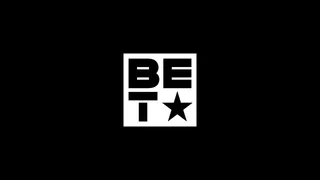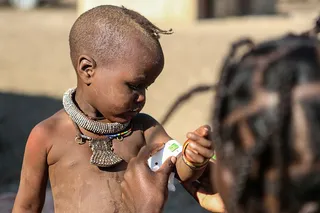Namibia’s Worst Drought in 30 Years
The impact of the drought and famine on the country.

1 / 10
Namibia’s Worst Drought in 30 Years - Namibia is currently facing its worst drought and famine in 30 years. Many regions have not seen rain in two consecutive years. Although Namibia is twice the size of California and considered an upper middle-income country by the World Bank, an estimated 778,000 Namibians, a third of the population, are either severely or moderately food insecure, according to UNICEF. BET.com takes a look at the impact the drought and famine continues to have for Namibians. —Dominique Zonyéé(Photo: Courtesy of UNICEF)

2 / 10
Below Average Rainy Season - Namibia has the least rainfall of all sub-Saharan African countries. The country receives an average of 14.6 inches of precipitation annually or 1.2 inches each month. However the last summer season from September 2012 to May 2013 was the driest in 25 years, with more than 3.5 inches less than the average rainfall.(Photo: DPA /LANDOV)

3 / 10
State of Emergency - President Hifikepunye Pohamba declared a national drought emergency on May 17, 2013, which allowed the government to provide 500,000 kilograms of maize to each region for two months. The government also allocated 200 million Namibian dollars (US $20.1 million) to relief efforts, as the drought is predicted to last through the next harvest season in March 2014.(Photo: REUTERS/Ray Stubblebine)

4 / 10
How Does Drought Affect an Agriculture Society? - Roughly 2 percent of Namibia’s land receives enough rainfall to grow staple crops such as maize, wheat and sorghum. With a dramatic decrease in rainfall, the Namibian Agronomic Board, NAB, told NBC News that Namibia harvested about 30-thousand tons of crops this year, compared to the 60-thousand tons produced annually.

5 / 10
How Many People Are in Danger? - Namibia has a population of roughly 2.3 million and according to a UNICEF Drought Report 778,000 people are in need of food assistance. In addition, 109,000 children under the age of five are at risk for malnutrition.(APhoto: Jordi Matas-UNICEF/AP Photo)
ADVERTISEMENT

6 / 10
Malnutrition Rates Rising - A medical officer at the Engela District Hospital in the hard-hit Ohangwena region said admissions for pediatric malnutrition increased by 76 percent since March, with 30 cases recorded in June.(Photo: Jordi Matas-UNICEF/AP Photo)

7 / 10
Which Areas Are at Higher Risk? - The regions of Kunene, Ohangwena, Omusati, Erongo, Khmoas and Kavango in the North were hit the hardest, with little to no rainfall in two consecutive years. There have been a total of 46 deaths as a result of malnutrition reported since January 2013. (Photo: Jerome Delay/AP Photo)

8 / 10
International Response - UNICEF in conjunction with the organization Humanitarian Action for Children has requested $7.4 million from governments to cover nutrition and their water and sanitation program from July 2013 through March 2014. The Namibian Red Cross and the UNICEF Namibian office have joined forces to donate $570,000.(Photo: Courtesy of UNICEF)

9 / 10
How Are the Funds Allocated? - UNICEF plans to use the money to train volunteers to implement its nutrition, water and sanitation programs, which would provide access to government-issued clean-water trucks, food and malnutrition monitoring.(Photo: Courtesy of UNICEF)
